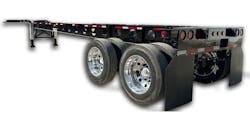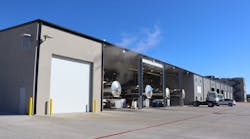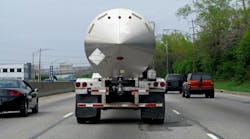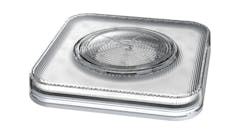Optronics International, a manufacturer and supplier of heavy-duty LED vehicle lighting, is set to unveil a new LED-based Purilite Light-Shield decontaminating light.
The company said its unique LED technology, which it will show at the Work Truck Show, will introduce a “revolutionary level of hygiene” to commercial vehicles, while improving air quality and enhancing worker safety in the process.
Microscopic airborne pollutants in and around vehicles can evade the body’s defense mechanisms, Optronics said, penetrating respiratory and circulatory systems and causing damage to lungs, hearts and brains, so the US Environmental Protection Agency (EPA) developed ambient air quality trends for particle pollution, also called Particulate Matter (PM).
PM 2.5 describes fine inhalable solid particles and liquid droplets, with diameters generally 2.5 micrometers and smaller. These particles include many types of mold and bacteria found in vehicles transporting food. PM 2.5 also includes soot emitted by diesel engines and APUs.
“Airborne and surface-based mold and bacteria are also a concern for those workers on vehicles that are exposed to biological residue and other contaminants,” said Brett Johnson, president and CEO of Optronics. “Sleeper cabs, vehicles with multiple users, and dry bulk and refrigerated food transportation haulers may be at greater risk of exposure. The climate a vehicle operates in may also be a factor in allergen and pathogen proliferation.”
Purilite Light-Shield LED lamps generate a constant stream of negative ions, created by a proprietary coating applied to their LEDs, Optronics said. The lamp provides decontamination and sanitization functions, while producing optimal light quality for human vision, approaching the color temperature of natural sunlight.
The ionic sanitization occurs through both physical and biological mechanisms. The negative ions bind to lightweight airborne PM 2.5 particles, adding mass and enabling natural gravitational forces to remove them from the air by causing them to float safely to the ground.
The negative ions also combine with positive molecules in mold spores and bacterial proteins, destroying them and causing them to decompose. Once terminated, what’s left of the pathogens also fall inertly to the ground. With viability removed, the biological remnants are rendered essentially sterile, reducing exposure risks even if they are disturbed and become airborne again.
“When the lights are on, they are doing their job,” Johnson said. “It’s deceptively simple. A sleeper cab driver can flip on these lights, go grab a bite and when they return, the cab environment will be significantly cleaner. If they prefer, drivers can remain in the cab while the lights are working, it’s perfectly safe just to leave them on.”
Preliminary tests in a controlled environment show a 77% reduction in PM 2.5 and a 65% reduction in Escherichia coli (E. coli) in one hour, the company claimed. Testing also compared Purilite Light-Shield with standard LEDs as well as no light source.
The new lamp will also help food supply chain and cold chain shipping companies comply with the most recent Food and Drug Administration (FDA), Food Safety Modernization Act (FSMA) rule on Sanitary Transportation of Human and Animal Food. With some exceptions, the final rule applies to shippers, receivers, loaders and carriers that transport food in the United States by motor or rail vehicle, whether or not the food is offered for or enters interstate commerce.
“Until today, surface cleaning procedures and bacteria-resistant surface treatments were the only methods available to fleets required to adhere to FSMA guidelines,” Johnson said. “Optronics’ Purilite Light-Shield is the first technology to transcend simple surface-oriented decontamination methods and move toward cleansing the entire interior environment of a vehicle, including the air.”










